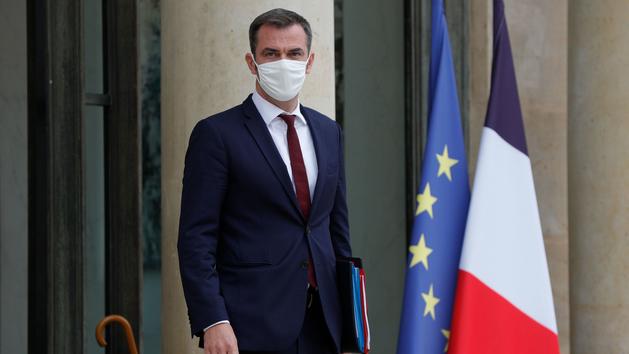The Minister of Health, Olivier Véran, on Wednesday presented new restrictions to halt the progression of the Covid-19 epidemic.
Le Figaro
takes stock.
Live: LIVE - Coronavirus: total closure of bars and restaurants in Marseille and Guadeloupe
Since the summer, the government has put in place a map of "active circulation of the virus" defined on four criteria: the incidence rate (the number of positive cases per 100,000 inhabitants over a week), the positivity rate (the percentage of positive tests on all screenings performed), the effective R (the number of people that an infected individual will then infect) and finally the occupancy rate of intensive care beds by Covid-19 patients.
Availability in hospitals is also taken into account.
Read also: Has the coronavirus become less dangerous this summer following a mutation?
Until now, the decision to pass a department "in red" was made when the incidence rate was greater than 50 per 100,000 inhabitants.
The passage "in red" - which is done by decree of the Prime Minister - gives more power to the prefects of the departments concerned to take restrictive measures.
Saturday, 53 departments were classified in "red".
Olivier Véran has just announced that among the areas classified in red, there were three alert levels decided at the level of large cities where
"the circulation of the virus is particularly strong,"
said the Minister of Health.
These areas are based on three criteria: the incidence rate, incidence rate in the elderly, and the share of patients with Covid-19 in intensive care units.
These are the alert area colored in light red on the map, the enhanced alert area colored in dark red, and the maximum alert area colored in scarlet.
For each of these areas, measures for a period of 15 days can be taken.
Restrictions in the "alert" zone
These are the areas where the incidence rate is greater than 50 new cases per 100,000 inhabitants.
It is colored light red on the map.
"In all of these territories, the prefect can take all the measures which seem relevant to him"
, specified the minister.
The only provision imposed everywhere concerns parties, weddings and associative events which must be held in small groups, ie less than 30 people.
Restrictions in the "enhanced alert" zone
These are areas where the incidence rate is above 150 per 100,000 inhabitants and when it exceeds 50 per 100,000 among the elderly.
It is colored dark red on the map.
This concerns: Bordeaux, Lyon, Toulouse, Nice, Saint-Etienne, Rennes, Montpellier, Lille, Paris and the departments of the inner suburbs, Rouen and Grenoble.
The measurements taken as of Saturday are as follows:
Limitation of gatherings to 1000 people
Prohibition of major events declared as local or student holidays
Ban on gatherings of more than 10 people in public spaces
Early closing of bars from Monday.
Closure of sports areas and gymnasiums
Closure of party and multipurpose rooms which will also come into effect on Monday.
Teleworking must be
"encouraged as much as possible",
warned the minister.
A consultation will take place between the prefects and the local elected officials in particular for the closing of the bars which will not be able to remain open beyond 10 p.m.
Restrictions in the "maximum alert" zone
These are areas where the incidence rate is greater than 250 cases per 100,000 inhabitants and 100 cases per 100,000 inhabitants for the elderly.
The areas concerned are Guadeloupe and the Aix-Marseille metropolis.
They are colored scarlet on the map.
The measures are the following in addition to those envisaged for restrictions in heightened alert zones:
Total closure of bars and restaurants.
Closure of all establishments open to the public unless there is a strict health protocol in place.
Museums, theaters and cinemas are therefore not concerned.








/cloudfront-eu-central-1.images.arcpublishing.com/prisa/VXMZOX65ABHL7FVL43RBSELBZE.jpg)